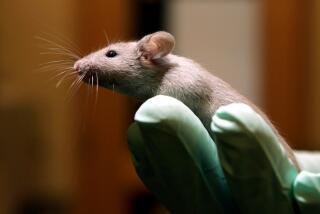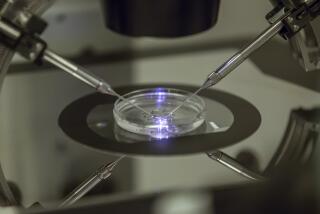Demand for in-vitro fertilization continues to climb as one of its pioneers snags top international award
- Share via
In 1978, Louise Brown was born -- and won the distinction of being the world’s first “test tube baby” because she was conceived thanks to then-innovative in-vitro fertilization techniques, or IVF, developed by British biologists.
Since then, IVF has more than grown up. The Los Angeles Times reports Monday that the technique and one of its pioneers are making headlines anew in “IVF innovator Robert G. Edwards wins Nobel.”
Use of such techniques, also called assisted reproductive technology, has more than doubled in the last decade and accounts for 1% of all infants born in the United States each year, according to the Centers for Disease Control and Prevention. IVF combines egg and sperm in a laboratory and then transfers the resulting embryo to the uterus of a woman who couldn’t previously conceive. (Read more about IVF and the percentage of women who successfully have children using this technique at MedlinePlus.)
Studies continue on the technique, which continues to grow in popularity. An Australian study published in September found that boys outnumber girls among babies conceived using fertilization techniques. Read more in “Fertility treatment may alter the gender balance.”
For a history of the “test tube baby” phenomenon, read the Los Angeles Times story “Birth by test tube turns 25.”
-- Mary Forgione / Los Angeles Times






